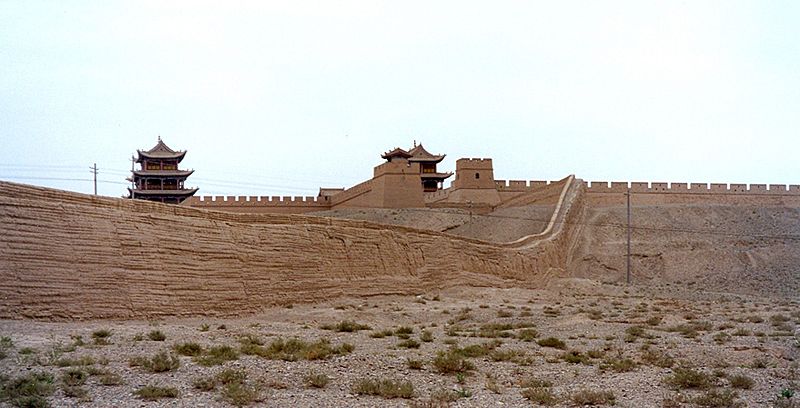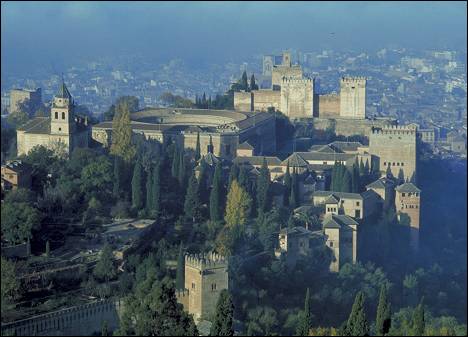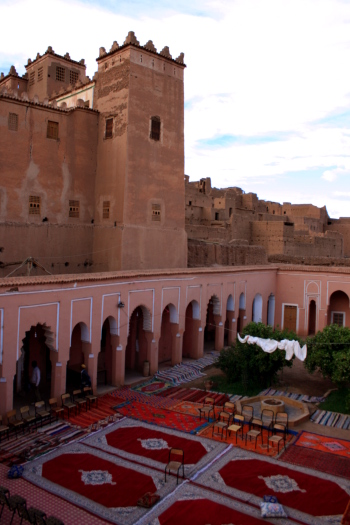Earthbag building and rammed earth construction are very similar. Both methods utilize earth that has been tamped solid. In the case of earthbag building, polypropylene bags or tubes contain the soil and eliminate the need for expensive forms. Since they are very similar in composition, we can reasonably speculate that earthbag houses will last for a very long time – possibly thousands of years – the same as ancient rammed earth structures.
It’s worth emphasizing that earthbag building is not just bags of dirt stacked upon each other. The most common earthbag fill material is clay/aggregate soil mixture. In other words, most ordinary subsoil (mineral soil) that has enough clay to bind the sand and gravel together. When this mix is lightly moistened and tamped solid, it becomes densely compacted and extremely durable as evidenced by the following ancient structures.
Great Wall

Granada Alhambra

Kasbah Caid Ali

More information: Historic Rammed Earth

Tiahuanaco Monuments (Tiwanaku / Pumapunku), Bolivia are made of geopolymer artificial stones created 1400 years ago…Rammed earth method has recently {2018} been shown to be used to construct these sites
((((LINK)))) >>> https://www.geopolymer.org/archaeology/tiahuanaco-monuments-tiwanaku-pumapunku-bolivia/
I really hope my educational link is not rejected as spam as it certainly is not spam, It is for educational purposes
This blog has numerous posts related to the use of geopolymers… see https://naturalbuildingblog.siterubix.com/?s=geopolymer
For the best building material on the planet there is nothing better than pumicecrete
Mix pumice cement and water and pour into a set of reusable forms
There are pumice structure that are 2000 years old
Pumicecrete is fire proof termite proof rust rot and mold proof tornado and hurricane proof and nothing can hurt it
How do I know this ? Because there are several structures in Rome that are 2000 years old and still standing today
Show me a 2000 year old straw bale home or a 2000 year old log cabin rock castle or an Adobe church there aren’t any but there is 2000 year old pumice structure
Why would build out of anything else???
Just to let everyone know that Pumicecrete is not for everyone in fact it is only for the people that want the best building on the planet and remember that the best cost the most you can not go Rolls Royce shopping with Volkswagen money so if you have to ask how much then you probably can’t afford it
You must be referring to “Roman concrete”. This is not the same as modern pumicecrete, which is made with Portland cement and fairly fine pumice aggregate. According to Wikipedia, Roman concrete is durable due to its incorporation of volcanic ash, which prevents cracks from spreading. Made up of aggregate and lime-pozzolan binders; it differed in that the aggregate pieces were typically far larger than in modern concrete, often amounting to rubble, and as a result it was laid rather than poured. Some Roman concretes were able to be set underwater, which was useful for bridges and other waterside construction. The volcanic ash acted as a pozzolan that reacted chemically with the lime.
Feels to me that it may be better for me to look into hempcrete or strawbale methods or, of course, aircrete as these provide insulating properties as part of the basic material. Alas the first two are not as bushfire proof as the latter but way more seismic activity tolerant.
It’s a given that well sized eaves are a necessity as you rightly pointed out.
I believe that hempcrete is rather fireproof. Another option might be earthbags filled with crushed volcanic stone (called scoria). This is what I built my house out of. It can be fireproof, earthquake resistant, durable, and quite insulating.
Hmmm, you’ve given me much to think about mainly in the area on insulation. I did think they were insulative by the sheer thickness and poor heat conductance through it. Something like the millions of tiny air pockets in foamcrete. Could these not be replicated by including a lot of spheres of styrofoam like material? Air puffed popcorn – it is used in packaging instead of styrofoam. Large insulative sheets inbetween two layers of rammed earth would imho weaken a wall mechanically and impair breathability. The insualtion could also be placed on the outside surfaces and that would be ideal in arid hot places but not ideal elswhere. It also does not solve the breathibility issues. Fibreglass batts are breathable but their insulative property degrades once humidity goes up and they are not a natural product at all.
Adding insulating aggregate to rammed earth could increase the insulation value slightly at the expense of cohesive strength. Modern insulated rammed earth is a well researched science, and you can read more about it at https://sirewall.com/ The walls do remain breathable in both directions. Fiberglass batts would not be a good choice. Rigid insulation can be attached to the outside and then protected with plaster, but this is not a natural solution.
Thank you for your reply. So, to take that conversation a little deeper, what would you say are the main downfalls of rammed earth technique/structures in non arid/desert situations? Would it be the soil movement based cracking or the earth walls working expanding/drying with the fluctuating humidity levels? Maybe mould? Cracks and water ingress?
Well, there are plenty of examples of durable rammed earth buildings around the world to attest to their resilience. They are vulnerable to seismic activity for sure, since they are generally not reinforced for such movement. Expansion and shrinkage would depend on the soil mix, and if there is too much clay this can be a problem. Mold should not be a problem unless there is organic matter in the mix. Earthen buildings can generally handle humidity better than practically any other technique, and can be a very healthy way to moderate humidity. Modern rammed earth buildings often add some cement stabilizer which helps with possible erosion, but this is best mitigated by wide roof eaves and proper foundations.
Rammed earth walls do not provide much real insulation in climates with extremes in temperatures. One way around this is to sandwich insulation between two rammed earth walls, and this has been done quite successfully.
So, so far all three mentioned are in arid if not desert situations. Is that because other structures (of rammed earth) in non desert or non arid climates have succumbed to the elements or just that these are what came to mind…
Earthen construction started in the Near East in arid lands, so there is more of a tradition there. And yes, wetter climates would tend to shorten the life span of earthen houses, or at least require more maintenance.